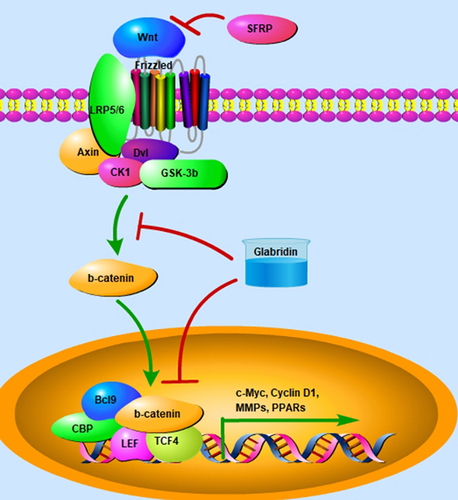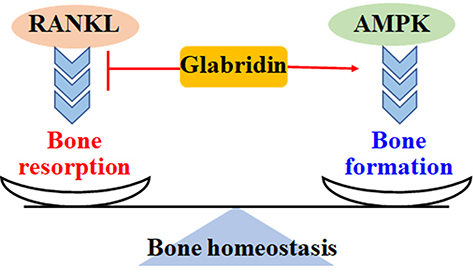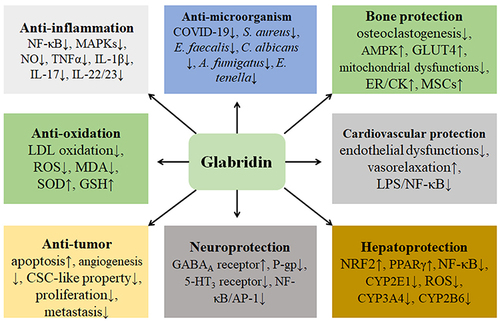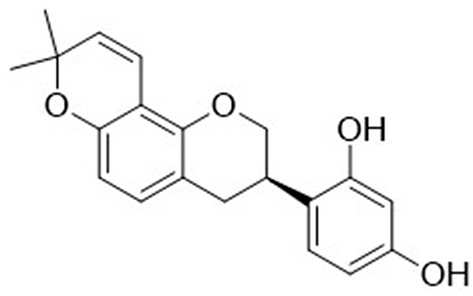Figures & data
Table 1 The Biological Effects of Glabridin in Different Models
Figure 2 Glabridin inhibits the activity of NF-κB and MAPK signaling pathways. Stimulated by LPS, TLRs may transduce the signals into the intracellular pathways by recruitment of many factors, such as MyD88. Activated TRAF6 can trigger the phosphorylation of p38 MAPK and JNK. In addition, TRAF6 also activates IKKs and then activates NF-κB by degrading IκBs. Activated NF-κB enter the nucleus to transcriptionally regulate the expression of target genes, including pro-inflammatory cytokines. P38 MAPK and JNK are also involved in mediating the expression of pro-inflammatory cytokines. Glabridin exhibits the inhibitory activity on LPS/TLR4/MyD88/NF-κB signaling. Glabridin also attenuates the expression of MAPK signaling pathway.

Figure 3 Glabridin ameliorates the activity of Wnt/β-catenin signaling. Binding of Wnt protein to Frizzled may activate Wnt/β-catenin signaling by recruiting Axin, CK1, Dv1, and GSK-3β. However, SFRPs can negatively regulate Wnt/β-catenin signaling by abolishing Wnts, forming inactive complexes with Frizzled receptors. Activation of Wnt/β-catenin signaling induces inactivation of GSK-3β, stability of β-catenin, and nuclear translocation of β-catenin, which binds to TCF4 and LEF-1 and promotes the transcriptional expression of target genes, such as MMPs, c-Myc, and Cyclin D1. Glabridin exhibits inhibitory activity against β-catenin-mediated target genes expression.

Figure 4 Glabridin maintains the balance of bone metabolism. RANKL stimulates inflammatory responses, promotes osteoclastogenesis and osteoclasts proliferation, and induces bone resorption. Activation of AMPK increases GLUT4-mediated glucose uptake, enhances osteoblasts metabolism and proliferation, and promotes bone formation. Glabridin inhibits RANKL-mediated bone resorption and induces AMPK-regulated bone formation.

Figure 5 The various pharmacological effects of glabridin are discussed. These effects include anti-inflammation, anti-oxidation, anti-tumor, anti-microorganism, bone protection, cardiovascular protection, hepatoprotection, and neuroprotection. Particularly, NF-κB signaling-mediated inflammatory responses and oxidative stress are involved in many diseases, and glabridin may suppress inflammation and oxidative stress and exhibit benefiting effects in different human systems.



